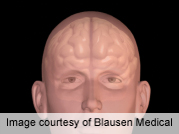
THURSDAY, Oct. 30, 2014 (HealthDay News) — There are clear differences in the brains of people with chronic fatigue syndrome and the brains of healthy people, new research indicates.
Scientists at Stanford University School of Medicine said their findings could help doctors diagnose this baffling condition and shed light on how it develops. People with chronic fatigue syndrome are often misdiagnosed or labeled as hypochondriacs.
Using three types of brain scanning technologies, “we found that [chronic fatigue syndrome] patients’ brains diverge from those of healthy subjects in at least three distinct ways,” said the study’s lead author, Dr. Michael Zeineh, assistant professor of radiology, in a Stanford news release.
Chronic fatigue syndrome affects up to 4 million people in the United States alone, says the U.S. Centers for Disease Control and Prevention. The condition, which causes debilitating and constant fatigue that persists for six months or more, is difficult to diagnose. Other symptoms of chronic fatigue syndrome can vary from one patient to the next. They are also similar to symptoms often associated with other health issues.
“Chronic fatigue syndrome is one of the greatest scientific and medical challenges of our time,” said the study’s senior author, Dr. Jose Montoya, professor of infectious diseases and geographic medicine, in the Stanford release.
“Its symptoms often include not only overwhelming fatigue but also joint and muscle pain, incapacitating headaches, food intolerance, sore throat, enlargement of the lymph nodes, gastrointestinal problems, abnormal blood-pressure and heart-rate events, and hypersensitivity to light, noise or other sensations,” he said.
Montoya and his team have been following 200 people with chronic fatigue syndrome for several years, hoping to improve diagnosis and treatment. In order to gain a better understanding of the condition, the researchers used MRI technology to compare the brains of 15 of these patients with 14 similar people without the condition or any related symptoms.
“If you don’t understand the disease, you’re throwing darts blindfolded,” said Zeineh. “We asked ourselves whether brain imaging could turn up something concrete that differs between [chronic fatigue syndrome] patients’ and healthy people’s brains. And, interestingly, it did.”
The study, published in the Oct. 28 issue of Radiology, found patients with chronic fatigue syndrome had less overall white matter (nerve tracts that carry information from one part of the brain to another) than the people who didn’t have the condition.
Chronic fatigue syndrome is thought to involve chronic inflammation, which may be due to an unidentified viral infection. Since such an infection can take a toll on white matter, this finding was not surprising, the researchers said.
Using advanced imaging techniques, however, the study’s authors also identified a specific brain abnormality among the patients with chronic fatigue syndrome. This abnormality was found in an area of the brain that connects the frontal lobe and temporal lobes, called the right arcuate fasciculus.
There was a strong link between the severity of this abnormality and the severity of chronic fatigue syndrome, the researchers said.
The study also found that patients with chronic fatigue syndrome had a thickening of the gray matter in two areas of their brain connected by the right arcuate fasciculus.
The researchers said that despite the strength of their findings, the results should be confirmed with more research. “This study was a start,” Zeineh said. “It shows us where to look.”
More information
The U.S. Centers for Disease Control and Prevention provides more on chronic fatigue syndrome.
Copyright © 2024 HealthDay. All rights reserved.

